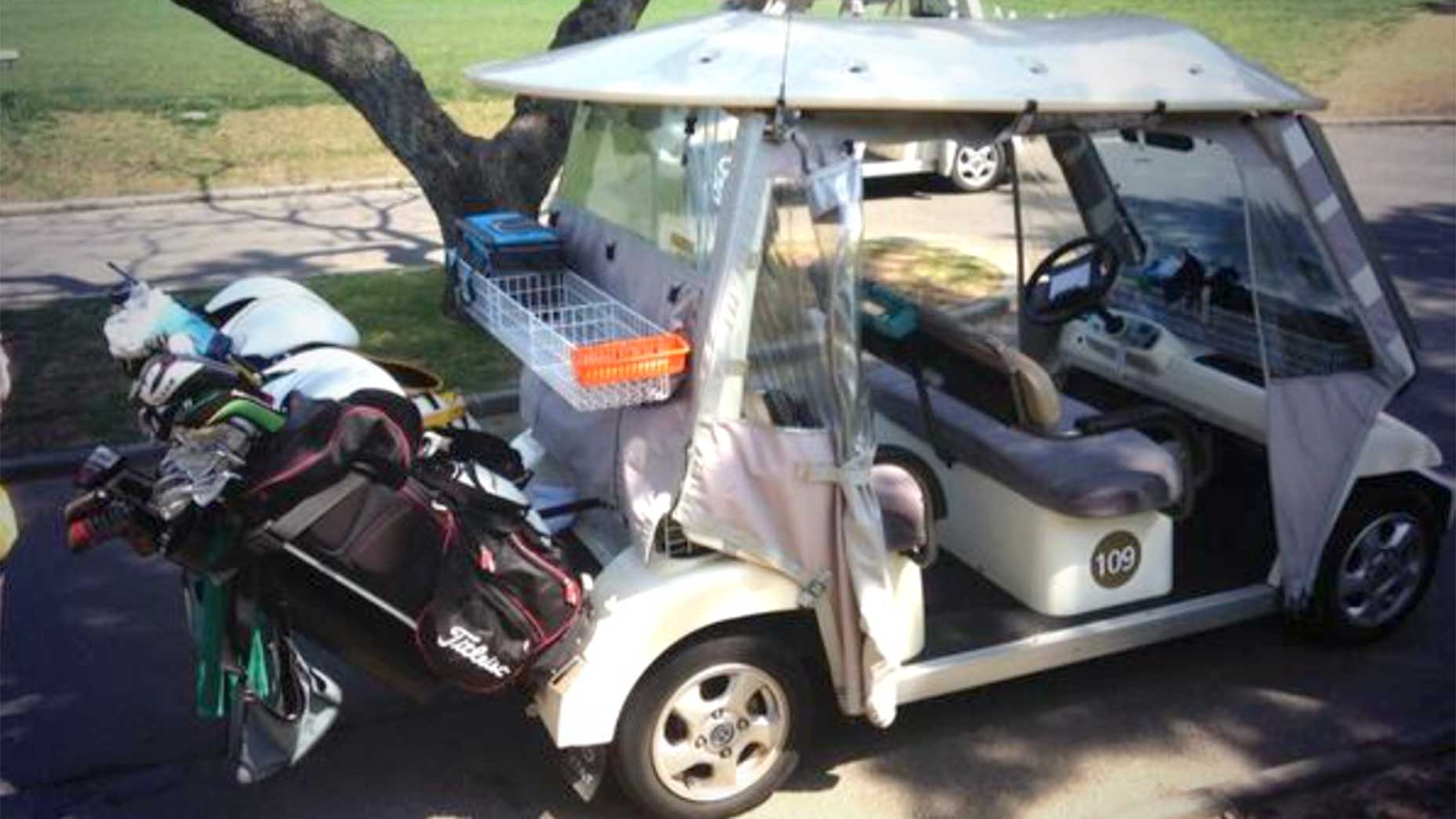If Mark Twain had played golf in South Korea, he wouldn’t have called it a “good walk spoiled.” That’s because pretty much everybody rides.
You know what else they do? They all take caddies.
No matter where you peg it in this golf-mad country, where the Bridges Cup, an elite amateur event, is taking place next week, a looper is required.
“It’s a big part of the golf experience here,” says Tyler Kwon, the founder of a Seoul-based private equity firm who plays as often as his schedule allows. “It’s also a big part of the fun.”
In Western countries, caddie culture has given rise to vivid archetypes, from the crusty Scottish looper to the Danny Noonan slacker to the Steve Williams enforcer. With rare exceptions, these characters are men. In South Korea, it’s the inverse; women dominate the trade. And while the Western rule for caddies is to keep up and shut up, only half of that mandate holds sway in South Korea. Caddies keep up but rarely keep quiet. On the contrary, many are quite vocal, and charmingly so, going about their business with endearing exuberance: celebrating good shots and lamenting poor ones — a marked contrast from the seen-it-all comportment of their counterparts elsewhere in the world.
Inside the unique tradition of golf’s liveliest lunch breakBy: Josh Sens
Here’s another difference: like golfers in South Korea, all caddies ride, or, rather, drive. They’re mode of transport is a five-person cart: caddie at the wheel, with the members of their foursome seated in rows behind them, and all four bags strapped to the back. When the caddie hops out to read the putt or get a yardage, she maneuvers the cart by remote control, using a GPS system designed to keep the buggy on the path.
It’s a busy job, attending to four players, with lots of long walks from cart to ball and back, and it gets even busier on the greens, where most caddies seem intent on doing nearly everything: fixing divots, cleaning balls, and then setting them down with the markings aligned with the break they’ve read. These tasks, too, involve a lot of hustling from one spot to the next.
“Good putt!” your caddie is apt to cry when you knock one in the center. Miss a shortie, though, and don’t be surprised if your trusty looper gets visibly upset.
For the most part, they dress alike, in uniforms provided by the club, often with added sun protection: gloves, broad-brimmed visors, masks over their cheeks.
In exchange for their efforts, they earn what is regarded as a reasonable wage compared to what is paid at factories or farms or other common jobs that require no formal schooling. As independent contractors, the bulk of their income is from tips, although caddies at some of the more high-end clubs might also pull in a base salary. While the size of the gratuity can vary, it roughs out to an average of 130,000 won per foursome (about $100).
In South Korea, most golfers like to play with something on the line. Often what they play for is the caddie fee. Lose your match, and it might be on you to pay the looper. Don’t fret. It’s worth it.
A good walk spoiled? More like a smooth ride, improved.











